


Why You Might Need a Tougher Muzzleloading Bullet than You Thought
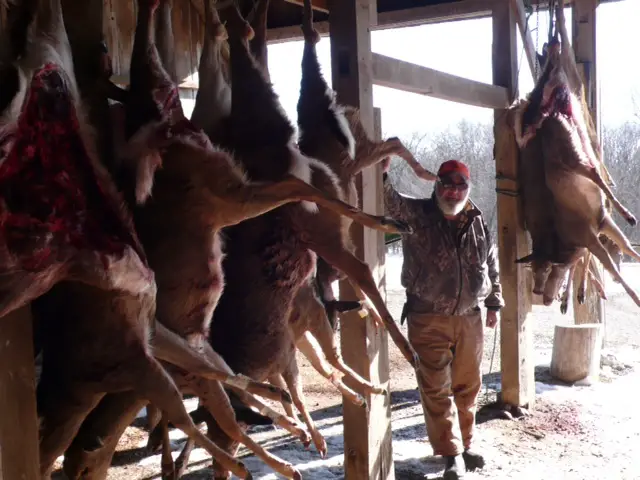
No one needs to wonder why Greg Abdoe doesn't need to buy much from a grocery store these days.
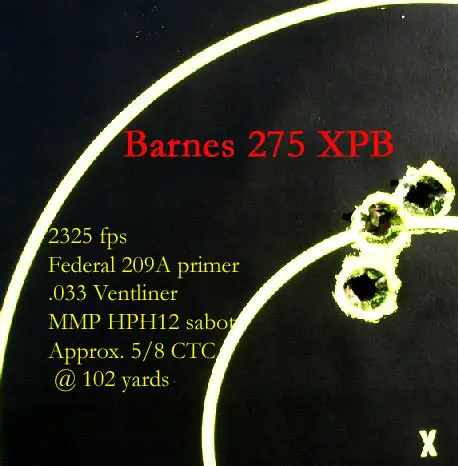
Inline muzzleloading is the lion's share of the market, no other form of muzzleloader so much as ranks by comparison. It all started with Tony Knight's MK-85, faster (at the time) 1:28 rate of twist barrels, and Del Ramsey's MMP sabots. However, while saboted .45 caliber bullets offered better exterior ballistics than .50 caliber projectiles, the most popular hunting load has always been 90 – 100 grains by volume of loose propellant or "100 grains" of pellets. It still is, for the most of of the high-volume whitetail hunting states are in the east or midwest, and the vast majority of whitetail deer are taken inside 100 yards, every year, year after year, regardless of firearm.
One
hundred grains of black powder, Pyrodex, or Pyrodex pellets was the dominant
load until 2002 or so, pushing a 250 grain or 300 grain saboted projectile.
As published by Knight Rifles in 2002, here is what the velocities were,
and are . . . with those 100 grain charges.
250 grain Knight Red Hot (Barnes MZ-Expander) 1590
fps muzzle velocity
300 grain Knight Red Hot (Barnes MZ-Expander) 1478
fps muzzle velocity
There has been good reason for the popularity of these loads. With an 8 pound rifle and a 250 grain saboted bullet, recoil is 26.21 ft. pounds with blackpowder (close to 100 grains weight to 100 grains volume) and recoil is even less with Pyrodex, for Pyrodex by bulk volumetric measure weighs about 30% less. By nature, .50 caliber rifles are fairly heavy guns: scope them up and sling them up and it is easy to get them to nine or ten pounds, very comfortable to shoot with loads in this area. Fun for Dad, and fun for Mom and the kids as well, for just 70 grains of Pyrodex by volume will take any deer on the planet inside 100 yards as long as the bullet is put in the right place.
Even with a poor-flying 250 grain Hornady XTP, sighted in 3 inches high at 100 yards (124 yard zero), a 100 grain Pyrodex load has a 6 inch kill Point Blank Range of 145 yards. Pistol bullets, designed for 1000 – 1300 fps launch velocities, had no trouble with whitetail. But, there were problems.
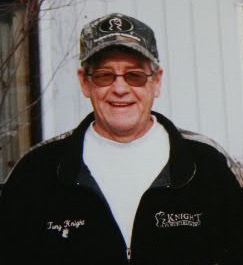
Elk hunters complained to Tony Knight (above) about the poor range and poor penetration of pistol bullets. Tony Knight used to make his own bullets for a time, back in the day, and his son Billy reminisced about when they finally decided to go with Barnes bullets, and it turned out to be the best thing they ever did.
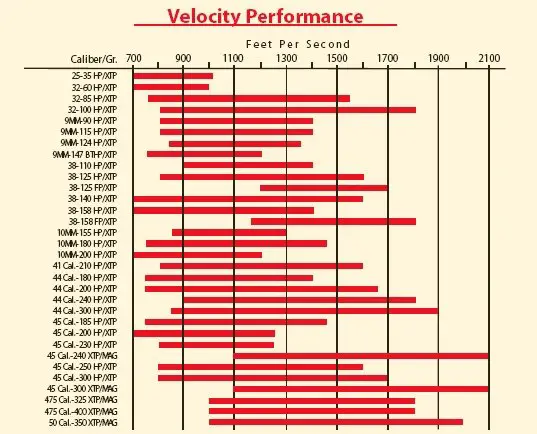
The most popular of pistol bullets used in muzzleloaders has been the Hornady XTP .452 250 grain hollow point. Considered a wide spectrum bullet, by pistol bullet standards, it is claimed to have a 800 fps - 1600 fps effective velocity range. That velocity range has been shredded by common hunting loads of 110 grains T7 loose powder, 110 grains Blackhorn 209, or two Triple Se7en Magnum pellets . . . all of which yield 2000 fps velocities: far beyond the design parameters of the bullet. It is no surprise that it does not work well at the common higher velocities, for it isn't supposed to.
Pyrodex pellets gave rise to the “3 pellet load,” resulting in 2013 fps with a 250 grain saboted bullet, and 1904 fps with a 300 grain saboted bullet out of Knight Rifles. It posed no issue with Barnes all-copper bullets, but major league problems with pistol bullets, even on whitetail. Hit bone, the dreaded “grenade” or varmint bullet effect was not uncommon, and the excruciatingly poor penetration on elk, bear, moose, was found to be unacceptable. No one can fault a pistol bullet for being what it is, of course, but they were all too often tried well beyond their original design parameters.
The problem became even more pronounced with the success of Hodgdon's Triple Se7en. That “100 grain load” wasn't a 1590 fps load any more. Contingent on barrel length and sabot / bore fit, 100 grains by volume of T7 FFg turned that 1590 fps load into 1925 fps or more. Blackhorn 209 does the same, only the max. published charge from Hodgdon is 100 grains T7, Blackhorn 209 has published maximum charges of 120 grains by volume . . . raising the bar to 2120 fps with 250 grain sabots with a published load from a powder manufacturer. Hodgdon introduced T7 Magnum pellets, so now the “two pellet load” wasn't 1590 fps any more, it was 2000 fps or a bit higher. Bullet problems, with cheap pistol bullets turned from a trickle to a geyser.
The Hornady XTP, a good pistol bullet, has a published G1 B.C. of .146, a great flyer if you want to compare it to the worst projectile form, a round ball. But, it is a miserable flyer compared compared to spire point bullets, where the B.C. is upped to .20 or better for a 250 class bullets. The problem became a greater problem, for not only did the new “100 grain” loads increase muzzle velocities by 335 fps or more, the more aerodynamically efficient spire point bullets meant higher impact velocities at all ranges, even without any increase in velocity at the muzzle.
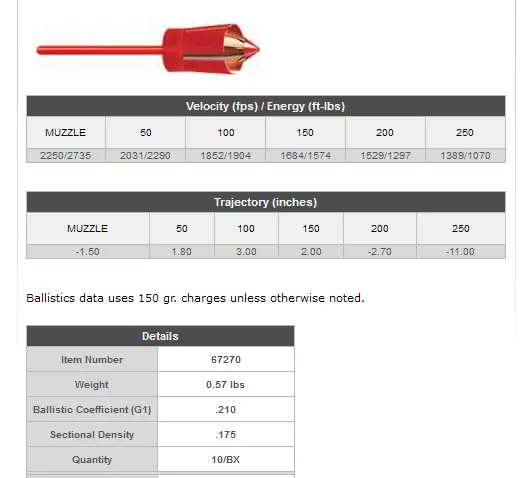
With the success of the T/C Omega and “3 pellet 2250 fps loads”
published by Hornady (above) and the Savage 10ML that delivered 2300 –
2400 fps, massive bullet disintegration became a huge problem, for the
obvious reasons. It still is, and has been for the last decade. With loads
of this caliber (pun int.), XTPs don't cut it, SST's don't cut it and
even the “bonded” SST (marketed as Shockwaves) didn't work universally
well, a big understatement.

The Barnes all-copper bullets always held up, though, so have their .032 inch jacketed Barnes Originals, the Parker Match Hunters boast higher ballistic coefficients yet, and a .028 inch thick jacket. Hornady, somewhat belatedly, has introduced their 250 grain “Mono-Flex,” similar to the SST but made of copper alloy as well. Federal has their new “Trophy® Copper” muzzleloading bullet with what they call their “B.O.R. Lock MZ™ System,” a sabotless (actually a non-discarding sabot design) that yet again uses a copper alloy bullet.
It has taken the industry a very long time to catch up with current high-performance muzzleloader impact velocities, but it appears now they finally have. The eagles seem to appreciate it as well.
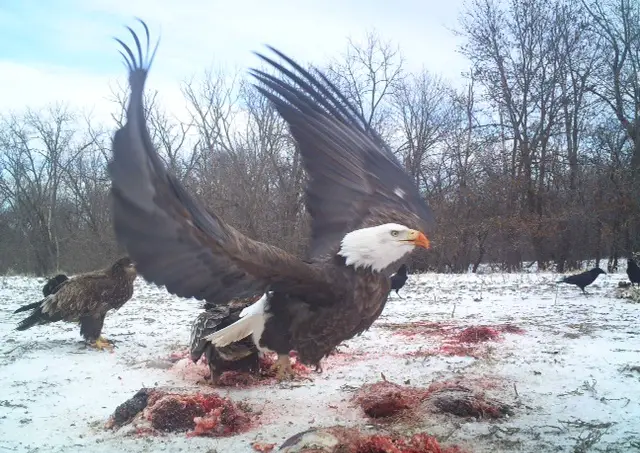
Copyright 2014 by Randy Wakeman. All Rights Reserved.

Custom Search


